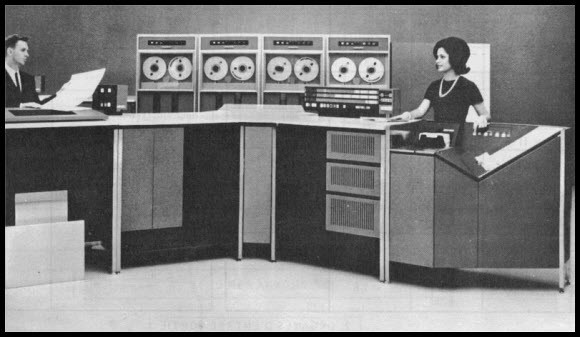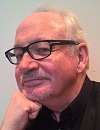Preamble
The Australian Computer Society (ACS) was formed 50 years ago, when the various state computer societies joined forces.
To mark the occasion, the ACS has initiated a heritage project to honour the many individuals who have contributed to the growth of the ICT profession in Australia.
At the heart of the project is a history of computing in Australia. It is not just a history of the ACS, but the history of a profession.
Australia has the longest computing history of any country, excepting the US and the UK, and CSIRAC in the Museum of Victoria is the oldest computer still in existence.
Chapter 25: Honeywell in Australia
IBM’s early mainframe rivals were called the BUNCH. The H stood for Honeywell, known as the Minneapolis-Honeywell Regulator Company until 1965.
Honeywell’s origins were in heating equipment in the early 20th century. Honeywell was another pioneer of commercial computing, entering the market in 1955 in a joint venture with Raytheon called Datamatic. Its first computer was the D-1000, which shipped in 1957.
In 1960 Honeywell bought out Raytheon and formed its Electronic Data Processing Division, which it later renamed Honeywell Information Systems (HIS). In 1966 it acquired another computer pioneer, Computer Control Corporation, and in 1970 it acquired GE’s computer division. These acquisitions greatly increased Honeywell’s product range and technological capabilities.
Honeywell set up in Australia in 1961, under American Phil Dobbs, who had started with computers in US Navy and subsequently worked in the US Treasury Department. He had led the team in Honeywell’s successful bid to install the first computers, two H800s, in Australia’s Department of Defence (see Chapter 18).
When the order was placed, Dobbs was sent to Australia to set up the local operation and oversee the delivery of the machines to Defence. He initially set up operations in two rooms in Sydney’s Chevron Hotel. It was to have been an 18-month assignment, but he remained head of HIS Australia until he retired in 1975.
The H800 descended from the D-1000, and was later upgraded to the H1800. Honeywell was to remain the main computer suppler to Defence until the late 1970s, and Sperry became the preferred supplier. Five H200s were added and an H1800. In 1969, Defence installed the first Honeywell multiprocessor in the world, an H8200.
In 1964, Honeywell sold its first commercial machines in Australia, both in Melbourne and both H200s, to newspaper and magazine distributor Gordon & Gotch and clothing company Bonds. The H200 was compatible with IBM’s 1401, then the world’s most popular computer. Honeywell was very successful with the computer in Australia. By 1970, it had a branch in every Australian state capital. That year it also inherited General Electric’s large Australian computer base.
Honeywell’s machines were very popular in government. As well as the Department of Defence, prominent customers included the Postmaster General’s Department, the Treasury, and the NSW Government. It also placed many of its H6000 machines in Australian banks. The first Australian H2000 Series machine, an update to the H200, was installed at consumer goods company Reckitt and Coleman in 1973.
Honeywell, in Australia and globally, enjoyed a relatively prosperous decade or two as an independent mainframe supplier, backed up by a larger instrumentation and process control parent. But as the technology became more sophisticated, the economies of scale weren't there. Honeywell began to look for international alliances.
NEC
As early as 1962, it entered into a technology sharing agreement with Japan's NEC.
NEC was little known outside of Japan at that time, and it seemed that it would gain more from the relationship than Honeywell. It did, and released its successful NEAC 2200 computer in 1965, a single architecture range that propelled NEC to a position of market leadership in Japan by the 1970s.
In 1970, Honeywell bought General Electric's computer business. GE had been losing large amounts of money in computers, but the deal gave Honeywell access to more advanced technology. The purchase included a two-thirds interest in French computer company Compagnie des Machines Bull, which was renamed Compagnie Honeywell Bull.
In 1973, Honeywell agreed to supply NEC with the source and object code of its GCOS 64 operating system, which became the basis of NEC's ACOS-4 operating system. In 1976 NEC began producing copies of the Honeywell Series 60 mainframes under its own name.
Honeywell remained moderately successful as a mainframe supplier, but it was unable to substantially increase its user base in the face of IBM’s popularity and the growing number of minicomputers suppliers. It began to rely more and more on its technological agreement with NEC and its marketing agreement with Bull.
In 1976 Compagnie Honeywell Bull merged with French company Compagnie International pour l'Informatique (CII), and in 1982 with other French computer companies Sems, Transac and R2E. The resultant company was called Groupe Bull. Honeywell's stake was 20 per cent, with most of the remainder owned by the French government, which had nationalised Bull's largest shareholder, and NEC.
In 1984, Honeywell and Bull signed ten-year cross-licensing deals with NEC, under which NEC would supply the DPS90 mainframes to both companies. Honeywell continued to make its own DPS8 range of mainframes, but these were old technology compared to the DPS90, and Honeywell Information Systems began to lose serious money.
Honeywell finally sold a majority shareholding in HIS to NEC (15%) and Groupe Bull (42.5 %) in 1986, for a total of US$527 million. The company was called Honeywell Bull. Bull itself remained healthy, largely because of the partisan support of the French government, through product purchases and capital injections. Bull increased its share in Honeywell Bull to 65 percent in 1988, thus finally ending Honeywell's days as a computer supplier.
Veteran ICT journalist Graeme Philipson is researching and writing the Heritage Project book, which is due for release on the 50th anniversary of the formal incorporation of the ACS, on 3 October 2017.
The project also involves the creation of a ‘virtual museum’, cataloguing hardware and other artefacts, and collecting and curating documents on the history of the industry, including oral histories of as many people as possible.
Please get in touch with Graeme if you would like to contribute, at [email protected]
Do you have early memories of the ICT industry in Australia? Help us make history by sending us your story! Record or write your memories to be included in our historic ACS Heritage Project. Details here.
Previously published:
Chapter 23: ACS at home and abroad
Chapter 22: The early years of the Australian Computer Society
Chapter 21: Other Australian universities
Chapter 20: University of Melbourne and Monash
Chapter 19: Sydney University and UNSW lead the way
Chapter 18: Computing in the Australian Government
Chapter 17: Trevor Pearcey and the birth of CSIRONET
Chapter 16: Enter the minicomputer – DEC comes to Australia
Chapter 15: The IBM S/360 in Australia
Chapter 14: IBM redefines the computer industry
Chapter 13: Control Data Australia (part II)
Chapter 12: Control Data Australia (part I)
Chapter 11: The Australian Computer Society
Chapter 10: Five Computer Societies
Chapter 9: Australian made, Australian designed
Chapter 8: Australia's Computer Industry in 1962
Chapter 5: SILLIAC and the Snowy Mountains Scheme
Chapter 3: Harry Messel and the birth of SILLIAC










